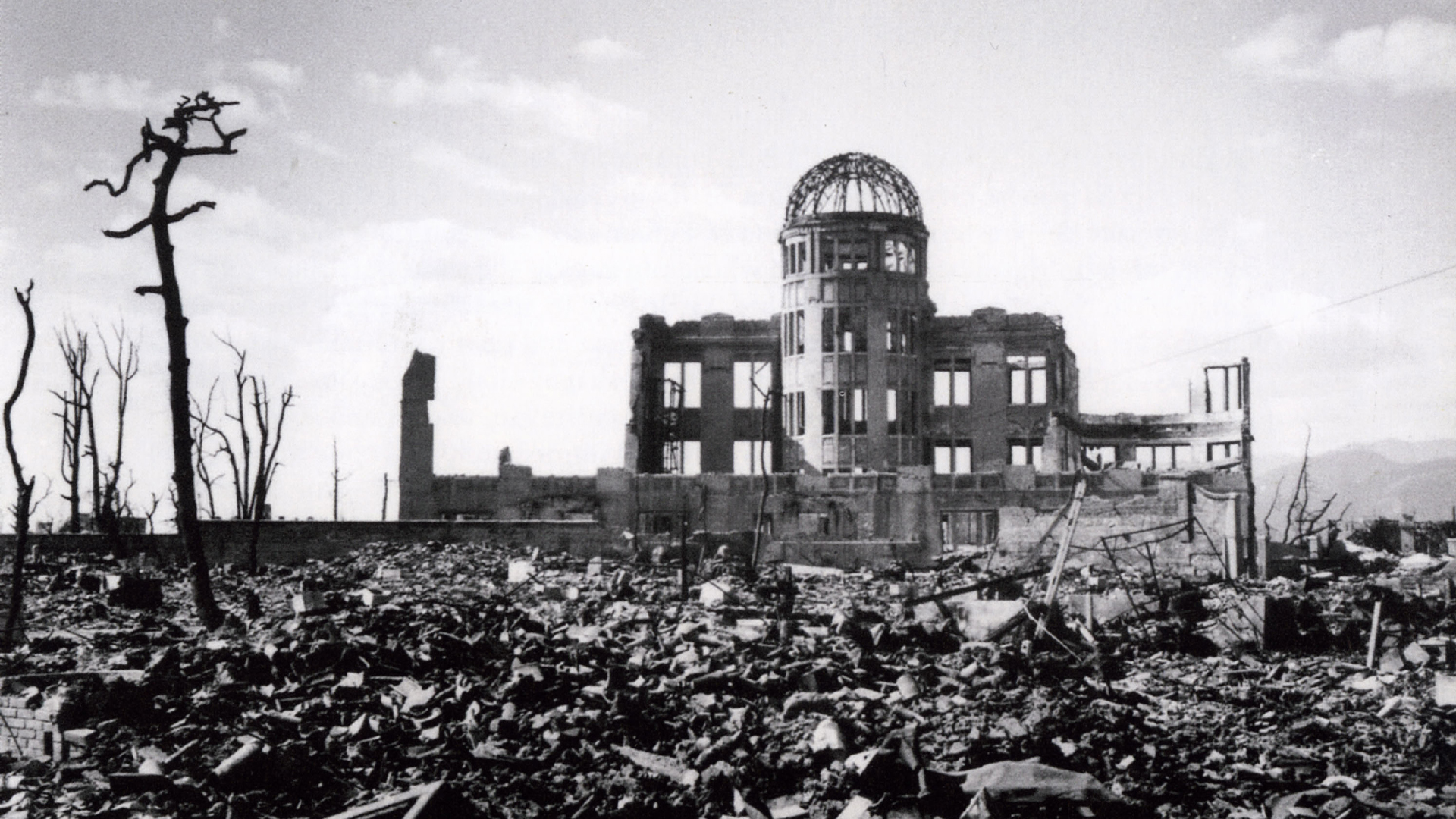Hiroshima fallout may offer a glimpse of the early solar system
Bits of glass called Hiroshimaites may have formed by processes similar to those that formed the sun and the planets.

Studying the conditions in the cloud of gas and dust that birthed our sun and planets is quite difficult. The few bits of information we have often come locked inside ancient materials formed 4.5 billion years ago when the solar system was being born. Those materials look like nothing on Earth — with a few potential exceptions.
In a new study published in Earth and Planetary Science Letters, researchers found that tiny spheres of glass created by the atomic fireball that devastated the Japanese city of Hiroshima during World War II look distinct from most materials formed on Earth. The superhot environment they formed in might instead bear some similarities to the solar nebula from which our sun formed.
"We don't necessarily have a lot of access to these extreme conditions, and using samples like this is an interesting way of tapping into the conditions that existed in the early solar system," said Greg Brennecka, a cosmochemist at Lawrence Livermore National Laboratory who wasn't involved in the study.
A catastrophic fireball
On 6 August 1945, a U.S. B-29 Superfortress dropped an atomic bomb above Hiroshima. When the 16-kiloton bomb exploded half a kilometer above the city, it created a fireball 260 meters (850 feet) in diameter with temperatures that reached more than 6,000°C (10,832°F). The explosion destroyed a large portion of the city, and as many as 140,000 residents were directly killed.
Materials from the city itself, including glass, concrete, and metal, were vaporized and mixed with air and water from the Ota River inside the superheated plasma the bomb created. As the fireball rapidly cooled, droplets formed from these materials began raining down. Researchers first found evidence of these fragments more than 80 years later, on beaches in Hiroshima Bay, in the form of tiny bits of glass they named Hiroshimaites.
Related: Why did the atomic bomb dropped on Hiroshima leave shadows of people etched on sidewalks?
To better understand how the glasses formed, Nathan Asset, a cosmochemist and Ph.D. student at the Institut de Physique du Globe de Paris, and his colleagues used X-ray spectroscopy, electron microprobes, and mass spectrometry to study the chemistry, shape, and isotopic composition of 20 Hiroshimaites.
Get the world’s most fascinating discoveries delivered straight to your inbox.
Most notable to the researchers, Asset said, was how distinct the isotopic ratios of silicon and oxygen in the glasses looked in comparison with materials typically found on Earth. In fact, the only other materials with a similar mix of isotopes are small, glassy fragments found in a kind of meteorite known as a chondrite. These fragments, called calcium-aluminum-rich inclusions (CAIs) and amoeboid olivine aggregates, are thought to have formed in the cloud of hot gas that our sun and the planets formed from.
"Because they're the first solids, they represent the first snapshots of what the solar system was built from," Brennecka said, referring to the fragments. "And they really haven't changed since then, so you've got four and a half billion years of time locked in there."
These meteorite inclusions could help show how quickly the sun and the planets formed and at what point in the evolution of the solar nebula. They also contain the elements and isotopes present during the solar system's early days, which can reveal information about the chemical reactions that were occurring.
Reading the isotopic clues
It was a sign, Asset said, that the Hiroshimaites formed in conditions that separated isotopes, or fractionated them, without respect to their individual masses.
"Nearly all processes on Earth and in the solar system show mass-dependent fractionation," he said. Mass-independent fractionation, on the other hand, "is quite rare in our solar system, because you need really specific processes to create that."
The CAIs found in meteorites are some of the only other natural examples of mass-independent fractionation known. Scientists have long debated why they formed this way, with one theory holding that a nearby supernova in the solar system's early days influenced the mix of isotopes found. Another idea is that unique chemical reactions in the solar nebula are responsible for the unique isotopic signature.
Asset said the analysis of the Hiroshimaites indicates it may be the latter. He and his colleagues argued that similarities between the glasses and the CAIs show that the same chemical reactions occurred during the atomic explosion and the formation of the solar system.
That isn't to say the Hiroshima explosion re-created the conditions present at the start of the solar system. Though both involved high temperatures and some of the same elements, the Hiroshima explosion happened in Earth’s atmosphere, rather than in the vacuum of space, and involved much higher pressures. Still, the two events may have shared enough similarities to make the same chemical reactions possible, Asset said.
Hans-Rudolf Wenk, a mineralogist at the University of California, Berkeley, who was an author on the original paper identifying Hiroshimaites but wasn't involved in the new study, said he was intrigued by the additional insights into the composition of the glasses but wasn't yet sure they could be compared with the CAIs in chondrites. For that, said Wenk, more data directly comparing the CAIs with Hiroshimaites would be helpful.
Those data may be coming. Asset and his coauthors are currently conducting experiments in the lab to try and re-create those conditions and test their theory further.
This article was originally published on Eos.org. Read the original article.
Nathaniel Scharping is a contributing writer for Eos.org.


